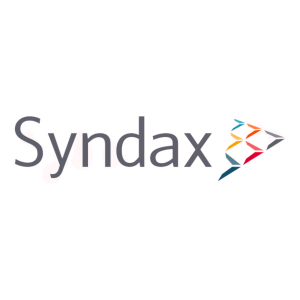Syndax Announces FDA Priority Review of sNDA for Revuforj® (revumenib) in Relapsed or Refractory mNPM1 Acute Myeloid Leukemia
Rhea-AI Summary
Syndax Pharmaceuticals (NASDAQ:SNDX) announced that the FDA has granted Priority Review for its supplemental New Drug Application (sNDA) for Revuforj® (revumenib) to treat relapsed or refractory mutant NPM1 acute myeloid leukemia.
The FDA has set a PDUFA target action date of October 25, 2025. The sNDA is being reviewed under the FDA's Real-Time Oncology Review program. If approved, Revuforj would become the first and only menin inhibitor approved for both R/R mNPM1 AML and R/R KMT2Ar acute leukemia. The drug received initial FDA approval in 2024 for R/R acute leukemia with KMT2A translocation.
The sNDA submission is supported by positive pivotal data from the AUGMENT-101 trial, with results published in Blood and presented at the EHA Annual Congress Meeting.
Positive
- FDA granted Priority Review status, potentially expediting the approval process
- Potential to become first and only menin inhibitor approved for both mNPM1 AML and KMT2Ar acute leukemia indications
- Review under FDA's RTOR program allows for more efficient review and closer FDA engagement
- Supported by positive pivotal data from AUGMENT-101 trial
Negative
- None.
Insights
FDA granting Priority Review for Revuforj in mNPM1 AML significantly expands Syndax's market potential with potential approval by October 2025.
The FDA's decision to grant Priority Review for Revuforj (revumenib) in relapsed/refractory mNPM1 AML represents a significant regulatory milestone for Syndax Pharmaceuticals. This expedited review pathway, typically reserved for therapies that could provide substantial improvements over available options, reduces the standard review time from 10 months to 6 months, with a PDUFA date of October 25, 2025.
The clinical significance here is substantial. NPM1 mutations are the most common genetic alteration in AML, present in approximately 30% of AML cases. This expanded indication would dramatically increase Revuforj's addressable patient population beyond its current approval in KMT2A-rearranged acute leukemia granted in 2024.
The review under FDA's Real-Time Oncology Review (RTOR) program is particularly noteworthy as it enables more efficient evaluation and closer engagement between Syndax and regulators throughout the submission process, potentially smoothing the approval pathway.
From a competitive standpoint, if approved, Revuforj would become the first and only menin inhibitor approved for both KMT2Ar and mNPM1 leukemias, strengthening Syndax's position as the leader in this novel therapeutic class. The company's established foundation with clinicians and payers provides a commercial advantage for rapid uptake if approved.
The regulatory submission is backed by pivotal data from the AUGMENT-101 trial, with results recently published in Blood and presented at the European Hematology Association Annual Congress, suggesting robust clinical evidence supporting efficacy in this patient population.
– PDUFA action date set for October 25, 2025 –
– sNDA being reviewed under FDA’s RTOR program –
– Revumenib has the potential to become the first and only menin inhibitor approved in both R/R mNPM1 AML and R/R KMT2Ar acute leukemia –
NEW YORK, June 24, 2025 (GLOBE NEWSWIRE) -- Syndax Pharmaceuticals (Nasdaq: SNDX), a commercial-stage biopharmaceutical company advancing innovative cancer therapies, today announced that the U.S. Food and Drug Administration (FDA) has granted Priority Review for its supplemental New Drug Application (sNDA) for Revuforj® (revumenib) for the treatment of relapsed or refractory (R/R) mutant NPM1 (mNPM1) acute myeloid leukemia (AML). The sNDA is being reviewed under the FDA's Real-Time Oncology Review (RTOR) program and has been assigned a Prescription Drug User Fee Act (PDUFA) target action date of October 25, 2025. RTOR allows for a more efficient review and close engagement between the sponsor and the FDA throughout the submission process.
“We are pleased that the FDA has granted Priority Review to our sNDA in R/R mNPM1 AML, a filing which builds on the initial approval of Revuforj for R/R acute leukemia with a KMT2A translocation in 2024,” said Michael A. Metzger, Chief Executive Officer. “Syndax is uniquely positioned to continue leading this exciting new therapeutic class with a first- and best-in-class menin inhibitor supported by compelling pivotal data across the broadest population of patients and a strong foundation already established among clinicians, payers, and other key stakeholders.”
Revuforj is an oral, first-in-class menin inhibitor that was FDA approved in 2024 for the treatment of R/R acute leukemia with a KMT2A translocation in adult and pediatric patients one year and older. The sNDA, if approved, would expand the indication for Revuforj to include patients with R/R AML who have an NPM1 mutation, the most common genetic alteration in AML. The sNDA is supported by positive pivotal data from the AUGMENT-101 trial of revumenib in patients with R/R mNPM1 AML. Results from this population were published in the journal Blood in May 2025 and presented at the European Hematology Association (EHA) Annual Congress Meeting in June 2025.
About Mutant NPM1 (mNPM1) Acute Myeloid Leukemia (AML)
Mutations in the NPM1 gene are the most common genetic alteration observed in adults with AML, occurring in approximately
About Revuforj® (revumenib)
Revuforj (revumenib) is an oral, first-in-class, selective menin inhibitor that is FDA approved for the treatment of relapsed or refractory (R/R) acute leukemia with a lysine methyltransferase 2A gene (KMT2A) translocation in adult and pediatric patients one year and older.
The FDA has granted Priority Review to Syndax’s supplemental New Drug Application (sNDA) seeking the approval of revumenib for the treatment of R/R mNPM1 AML. The sNDA is being reviewed under the FDA's Real-Time Oncology Review (RTOR) program, which allows for a more efficient review and close engagement between the sponsor and FDA. The sNDA is supported by positive pivotal data from the AUGMENT-101 trial of revumenib in patients with R/R mNPM1 AML. Results from this population were published in the journal Blood and presented at the 2025 European Hematology Association (EHA) Annual Congress Meeting.
Additionally, multiple trials of revumenib in combination with standard-of-care agents in mNPM1 AML or KMT2A-rearranged acute leukemia are ongoing or planned across the treatment landscape, including in newly diagnosed patients.
Revumenib was previously granted Orphan Drug Designation for the treatment of AML, ALL and acute leukemias of ambiguous lineage (ALAL) by the U.S. FDA and for the treatment of AML by the European Commission. The U.S. FDA also granted Fast Track designation to revumenib for the treatment of adult and pediatric patients with R/R acute leukemias harboring a KMT2A rearrangement or NPM1 mutation and Breakthrough Therapy Designation for the treatment of adult and pediatric patients with R/R acute leukemia harboring a KMT2A rearrangement.
IMPORTANT SAFETY INFORMATION
WARNING: DIFFERENTIATION SYNDROME
Differentiation syndrome, which can be fatal, has occurred with Revuforj. Signs and symptoms may include fever, dyspnea, hypoxia, pulmonary infiltrates, pleural or pericardial effusions, rapid weight gain or peripheral edema, hypotension, and renal dysfunction. If differentiation syndrome is suspected, immediately initiate corticosteroid therapy and hemodynamic monitoring until symptom resolution.
WARNINGS AND PRECAUTIONS
Differentiation syndrome: Revuforj can cause fatal or life-threatening differentiation syndrome (DS). Symptoms of DS, including those seen in patients treated with Revuforj, include fever, dyspnea, hypoxia, peripheral edema, pleuropericardial effusion, acute renal failure, and/or hypotension. In clinical trials, DS occurred in 39 (
Reduce the white blood cell count to less than 25 Gi/L prior to starting Revuforj. If DS is suspected, immediately initiate treatment with systemic corticosteroids (e.g., dexamethasone 10-mg IV every 12 hours in adults or dexamethasone 0.25-mg/kg/dose IV every 12 hours in pediatric patients weighing less than 40 kg) for a minimum of 3 days and until resolution of signs and symptoms. Institute supportive measures and hemodynamic monitoring until improvement. Interrupt Revuforj if severe signs and/or symptoms persist for more than 48 hours after initiation of systemic corticosteroids, or earlier if life-threatening symptoms occur such as pulmonary symptoms requiring ventilator support. Restart steroids promptly if DS recurs after tapering corticosteroids.
QTc interval prolongation: In the clinical trials, QTc interval prolongation was reported as an adverse reaction in 39 (
Correct electrolyte abnormalities, including hypokalemia and hypomagnesemia, prior to treatment with Revuforj. Perform an electrocardiogram (ECG) prior to initiation of Revuforj, and do not initiate Revuforj in patients with QTcF >450 msec. Perform an ECG at least once weekly for the first 4 weeks and at least monthly thereafter. In patients with congenital long QTc syndrome, congestive heart failure, electrolyte abnormalities, or those who are taking medications known to prolong the QTc interval, more frequent ECG monitoring may be necessary. Concomitant use with drugs known to prolong the QTc interval may increase the risk of QTc interval prolongation.
- Interrupt Revuforj if QTcF increases >480 msec and <500 msec, and restart Revuforj at the same dose twice daily after the QTcF interval returns to ≤480 msec
- Interrupt Revuforj if QTcF increases >500 msec or by >60 msec from baseline, and restart Revuforj twice daily at the lower-dose level after the QTcF interval returns to ≤480 msec
- Permanently discontinue Revuforj in patients with ventricular arrhythmias and in those who develop QTc interval prolongation with signs or symptoms of life-threatening arrhythmia.
Embryo-fetal toxicity: Revuforj can cause fetal harm when administered to a pregnant woman. Advise pregnant women of the potential risk to a fetus. Advise females of reproductive potential and males with female partners of reproductive potential to use effective contraception during treatment with Revuforj and for 4 months after the last dose of Revuforj.
ADVERSE REACTIONS
Fatal adverse reactions occurred in 4 (
Serious adverse reactions were reported in 99 (
The most common adverse reactions (≥
DRUG INTERACTIONS
Drug interactions can occur when Revuforj is concomitantly used with:
- Strong CYP3A4 inhibitors: reduce Revuforj dose
- Strong or moderate CYP3A4 inducers: avoid concomitant use with Revuforj
- QTc-prolonging drugs: avoid concomitant use with Revuforj. If concomitant use is unavoidable, obtain ECGs when initiating, during concomitant use, and as clinically indicated. Withhold Revuforj if the QTc interval is >480 msec. Restart Revuforj after the QTc interval returns to ≤480 msec.
SPECIFIC POPULATIONS
Lactation: advise lactating women not to breastfeed during treatment with Revuforj and for 1 week after the last dose.
Pregnancy and testing: Revuforj can cause fetal harm when administered to a pregnant woman. Verify pregnancy status in females of reproductive potential within 7 days prior to initiating Revuforj.
Pediatric: monitor bone growth and development in pediatric patients.
Geriatric: compared to younger patients, the incidences of QTc prolongation and edema were higher in patients 65 years and older.
Infertility: based on findings in animals, Revuforj may impair fertility. The effects on fertility were reversible.
To report SUSPECTED ADVERSE REACTIONS, contact Syndax Pharmaceuticals at 1-888-539-3REV or FDA at 1-800-FDA-1088 or www.fda.gov/medwatch.
Please see Full Prescribing Information, including BOXED WARNING.
About the Real-Time Oncology Review (RTOR) Program
RTOR provides a more efficient review process for oncology drugs to ensure that safe and effective treatments are available to patients as early as possible, while improving review quality and engaging in early iterative communication with the applicant. Specifically, it allows for close engagement between the sponsor and the FDA throughout the submission process and it enables the FDA to review individual sections of modules of a drug application rather than requiring the submission of complete modules or a complete application prior to initiating review. Additional information about RTOR can be found at: https://www.fda.gov/about-fda/oncology-center-excellence/real-time-oncology-review.
About Syndax
Syndax Pharmaceuticals is a commercial-stage biopharmaceutical company advancing innovative cancer therapies. Highlights of the Company's pipeline include Revuforj® (revumenib), an FDA-approved menin inhibitor, and Niktimvo™ (axatilimab-csfr), an FDA-approved monoclonal antibody that blocks the colony stimulating factor 1 (CSF-1) receptor. Fueled by our commitment to reimagining cancer care, Syndax is working to unlock the full potential of its pipeline and is conducting several clinical trials across the continuum of treatment. For more information, please visit www.syndax.com/ or follow the Company on X and LinkedIn.
Forward-Looking Statements
This press release contains forward-looking statements within the meaning of the Private Securities Litigation Reform Act of 1995. Words such as "anticipate," "believe," "could," "estimate," "expects," "intend," "may," "plan," "potential," "predict," "project," "should," "will," "would" or the negative or plural of those terms, and similar expressions (as well as other words or expressions referencing future events, conditions or circumstances) are intended to identify forward-looking statements. These forward-looking statements are based on Syndax's expectations and assumptions as of the date of this press release. Each of these forward-looking statements involves risks and uncertainties. Actual results may differ materially from these forward-looking statements. Forward-looking statements contained in this press release include, but are not limited to, statements about the progress, timing, clinical development and scope of clinical trials, the reporting of clinical data for Syndax's product candidates, the acceptance of Syndax and its partners' products in the marketplace, sales, marketing, manufacturing and distribution requirements, and the potential use of its product candidates to treat various cancer indications and fibrotic diseases. Many factors may cause differences between current expectations and actual results, including: unexpected safety or efficacy data observed during preclinical or clinical trials; clinical trial site activation or enrollment rates that are lower than expected; changes to Revuforj's or Niktimvo’s commercial availability; changes in expected or existing competition; changes in the regulatory environment; failure of Syndax's collaborators to support or advance collaborations or product candidates; and unexpected litigation or other disputes. Other factors that may cause Syndax's actual results to differ from those expressed or implied in the forward-looking statements in this press release are discussed in Syndax's filings with the U.S. Securities and Exchange Commission, including the "Risk Factors" sections contained therein. Except as required by law, Syndax assumes no obligation to update any forward-looking statements contained herein to reflect any change in expectations, even as new information becomes available.
Niktimvo is a trademark of Incyte.
All other trademarks are the property of their respective owners.
Syndax Contact
Sharon Klahre
Syndax Pharmaceuticals, Inc.
sklahre@syndax.com
Tel 781.684.9827
SNDX-G







